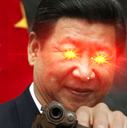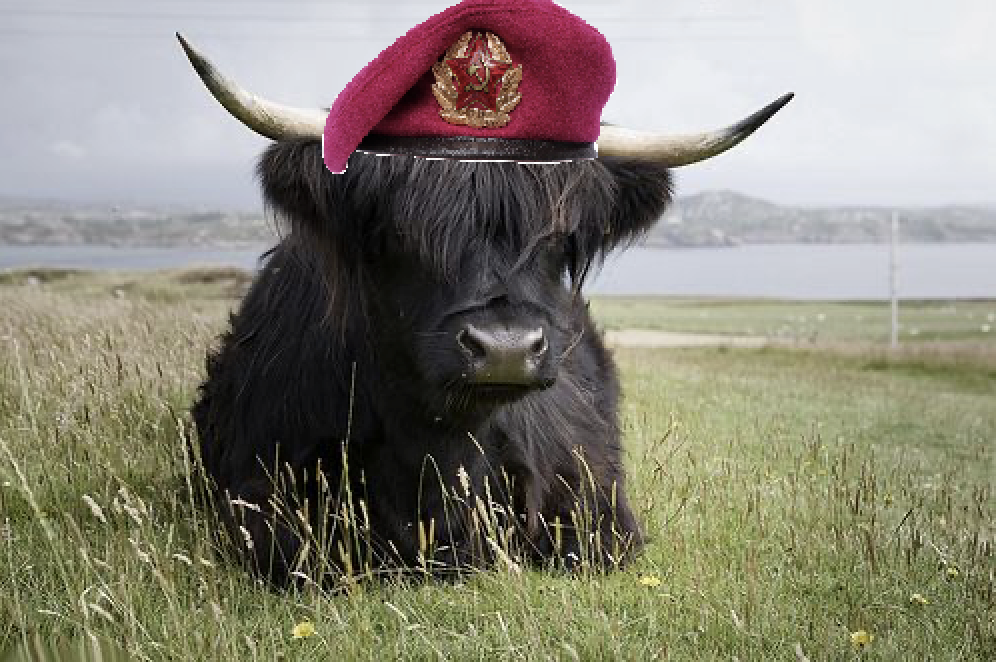The red flag fell over the Kremlin in 1991.
The West declared victory. China took notes.
For three decades, the CPC has dissected why the USSR collapsed—not because socialism failed, but because its guardians surrendered.
Here’s what China learned.
1 — Bread, Then Ballots: How Economic Mismanagement Triggered Collapse
China’s first lesson: economic reform must consolidate socialism—not dismantle it.
Gorbachev reversed this logic, liberalizing politics before resolving stagnation.
“Gorbachev was pushing political reform ahead of economic reform; China under Deng was promoting economic reform ahead of political reform.” — Victor Gao
Perestroika unleashed market chaos without structure. Supply chains collapsed. Prices exploded.
“The privatization reform led to a serious polarization of the distribution of wealth, a lack of socialist ideals and beliefs, an extremely chaotic sense of ethics and morality, and an all-round regression of the social spirit.” — Li Shenming/Chen Zhihua
The acute failure wasn’t socialism itself, but reform without sequence, without control.
2 — Historical Nihilism: How the Communist Party of the Soviet Union Lost the Will to Rule
The CPC’s second lesson: revolutions die when they lose faith in themselves.
“There are multiple factors contributing to the disintegration of the Soviet Union, a very important one being Khrushchev throwing away Stalin’s knife and Gorbachev’s open betrayal of Marxism-Leninism.” - CPC leader Hu Jintao
“Khrushchev’s denunciation ‘shook the foundations’ of Soviet authority.” — Hu Jintao
Gorbachev’s glasnost reforms—intended as renewal—accelerated ideological collapse.
"After the legalization of private newspapers and the privatization of state-run media, the main media in the Soviet Union were soon controlled by private capital and elite forces inside and outside the Soviet Union.
Capital at home and abroad tried its best to vilify and subvert the socialist system and preach the glorification of the eternal rule of capitalism…
With the implementation of the policy of “openness without restrictions,” a vigorous trend of historical nihilism that negated the CPSU and the Soviet Union rapidly spread to the historiographical, theoretical, and ideological circles." — Li Shenming/Chen Zhihua
“An important reason [for the Soviet collapse] was that their ideals and convictions wavered.” — Xi Jinping
A party that discredits its own history cannot hold power.
Historical nihilism was suicide by self-critique.
3 — From One Party to No Party: How the CPSU Dismantled Itself
The CPSU didn’t fall to a revolution. It collapsed because no one defended it—not the Party, not the people, not the army.
Gorbachev’s reforms eroded Party control: contested elections, a presidency outside the Party, pluralist elites.
"The so-called Gorbachev-style socialism was just a slogan, he himself did not have a well-formed concept.
At that time Gorbachev also came up with this slogan, ‘More socialism, more democracy’. This is a very stupid way of putting it. Is there socialism or is there not socialism?
The reference to more or less is nonsense.
So when the question was raised as to what is ‘more socialism’, Gorbachev, the proponent of this formulation, himself spread his arms and didn’t know how to answer." — Aleksandr Kapto, Former Head of CPSU Central Committee’s Ideological Department
When the Party’s authority dissolved, the state followed.
Reform without discipline became liquidation.
4 — One Union, Fifteen Flags: How the USSR Imploded from the Periphery
The Soviet Union constitutionally allowed its republics to secede. And when the center weakened, they did.
“Even a symbolic secession clause can become a real dagger when central authority wanes.” — Global Times
Gorbachev’s decentralization enabled nationalist movements to legally dissolve the Union.
“Moscow’s failure to ‘subordinate ethnic identity and stamp out local nationalisms’ was a primary reason the federation dissolved.” — Prof. Ma Rong, Peking University
Beijing responded by rejecting Soviet-style federalism.
China recognizes ethnic diversity—but sovereignty is indivisible. National cohesion is a red line.
5 — Overreach, Not Encirclement: How the USSR Exhausted Itself Geopolitically
The USSR wasn’t simply outgunned—it overextended itself trying to match imperial pressure on imperial terms.
Arms races, Afghanistan, client-state subsidies—it drained itself.
Military spending rose to an estimated 15–17% of Soviet GDP by the 1980s, a colossal allocation that starved civilian sectors.
The CPC sees this as partially self-inflicted. The West pushed, but the USSR walked into the trap.
The Chinese lesson: strength begins with development, not illusions of trust or military footprint.
6 — Dollar Wars: How U.S. Finance Helped Break the Soviet Economy
The CPC also studied how the USSR was broken by oil shocks and credit warfare.
In the 1980s, oil revenues were the USSR’s lifeline. When Saudi overproduction—backed by the U.S.—crashed prices, Soviet income collapsed.
“The Soviet economy was ‘fragile’ by the 1980s, overly dependent on resource exports and burdened by costly obligations.” — CCTV / Global Times
Desperate, Soviet leaders turned to Western credit—but loans came with strings: liberalization, privatization, and chaos.
Core lesson: never let your economy be hostage to foreign currencies, foreign markets, or foreign lenders.
7 — Peaceful Evolution: How the West Won the Information War
The USSR didn’t just lose a battle of arms. It lost a battle of ideas.
Western liberalism entered via glasnost, NGOs, dissidents, and cultural infiltration. The CPSU disarmed itself ideologically—and the West filled the vacuum.
“The CPSU’s removal of the seal of Marxism and Leninism in the ideological field… set free the demon, which destroyed it. The collapse of thoughts brought the collapse of the CPSU.” — CPC Documentary
Western NGOs, spies, and propaganda efforts incubated a pro-Western fifth column within the USSR.
Ideological security is national security. If your enemies teach your youth what to believe, you’ve already lost.
7 — No One Resisted: The Final Lesson of Soviet Collapse
When the end came, no one defended the Soviet Union. 19 million Party members stood down. The military didn’t act. The state evaporated without resistance.
The Party had died long before the flag came down.
“In the end, nobody was a real man, nobody came out to resist.” — Xi Jinping
The CPC sees this as the endgame of ideological surrender, strategic confusion, and liberal reform: not death by external blow—but collapse from within.
"Individuals from Khrushchev to Gorbachev slowly distorted, castrated, falsified, and betrayed the correct theoretical foundation laid by Lenin for the CPSU…
If the foundation is not strong, the earth moves and the mountain shakes. Having lost the theoretical basis of Marxism-Leninism, the Soviet Union’s collapse was inevitable." — CPC documentary
From Beijing’s 2006 documentary ‘Preparing For Danger In Times Of Safety – Historic Lessons Learned from the Demise of Soviet Communism’:
"From the 1991 Soviet disintegration to the end of the 20th century, Russia’s gross domestic product (GDP) declined by 52% compared with the GDP level in 1990, while it declined only 22% during the war years from 1941 to 1945.
Over the same period (1991 to the end of the 20th century), Russian industrial production decreased by 64.5%, and agricultural production by 60.4%.
As the ruble devaluated, prices rose 5000 times.
Since 1992, the Russian population has been declining. In 1990 average life expectancy in Russia was 69.2 years, but it fell to 65.3 years in 2001, almost 4 year’s decline. The male life expectancy in some parts dropped a full 10 years.
The disintegration of the CPSU and the Soviet Union has brought disastrous consequences to the people and the country, far beyond these figures and situations."
[This comment is also very good:]
China was able to maintain sovereign Party control while deploying market mechanisms within a planned framework.
Key was crushing the 1989 Tiananmen CIA/NGO-backed color revolution attempt and removing comprador infiltrators like Zhao Ziyang. This unlike the USSR, where the Party fragmented and capitulated to foreign-backed reformers.
The CPC then shrewdly built state-directed national champions, kept finance under Party command, and tightly controlled integration with global markets — avoiding the asset-stripping that ravaged post-Soviet Russia.
As for the USSR’s “autocracy”, for the most part — including its errors — seems like a reactive posture shaped by postwar encirclement and the imperative to defend against relentless imperialist pressure.
China, in contrast, leveraged its split with the USSR to gain controlled access to Western capital — a strategic move that fueled development without surrendering sovereignty.
What a great post! Thanks for sharing it all here! This will help in case the original gets deleted in Twitter.
That’s the idea. Anti-imperialist accounts get banned all the time there, a thread can just disappear. Takes a little more effort to copy paste everything but it’s safer this way.
Fantastic post, great read, gives a bunch of excellent litmus tests with necessary historical contexts which one can look back on. Thanks!!!
“There are multiple factors contributing to the disintegration of the Soviet Union, a very important one being Khrushchev throwing away Stalin’s
knifespoon and Gorbachev’s open betrayal of Marxism-Leninism.” - CPC leader Hu JintaoSorry, I had to.
Never throw away the spoon.
without the magic spoon there was no hope
GOOD post!




